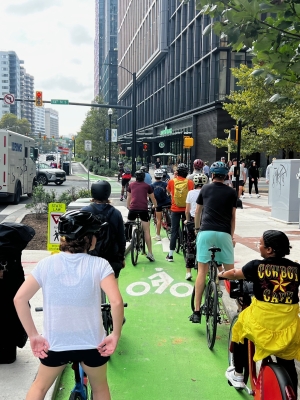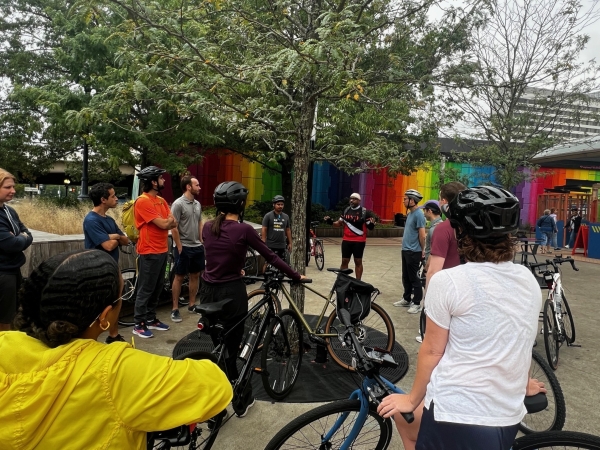Joint Fall Bike Tour Around National Landing (Crystal City): Promoting Active Transportation and Networking
By: Regis Stinson
The DC chapter partnered with COMTO DC and CAPSITE recently for a host a dynamic bike ride around the National Landing, located in the Crystal City neighborhood of Arlington, Virginia. This semi-annual event draws transportation professionals and advocates, as well as cycling enthusiasts, all united by a shared interest in promoting active transportation, sustainability, and professional networking. With National Landing transforming into a tech and business hub, alongside extensive infrastructure development for cyclists and pedestrians, the setting for this ride was ideal. The scenic route took participants through tree-lined streets, city parks, and vibrant urban landscapes, showcasing the evolving transportation ecosystem of the region.

Highlights of the Ride
1. Route Through Key Landmarks: The ride featured several projects of interest, such as the new Long Bridge Project that will be replacing the century-old bridge that spans the Potomac River, the recently completed Boundary Channel Interchange Project and its new shared use path that connects Mount Vernon Trail to the Long Bridge Park, and the anticipated Route 1 Multimodal Improvement Project. Riders also passed through vibrant parts of Crystal City, showcasing how the region’s transportation infrastructure supports both urban living and commuter access.
2. Promoting Active Transportation: As National Landing continues to develop, it has become a prime example of how cities can prioritize active transportation options. The bike ride encouraged participants to experience these options firsthand, highlighting the importance of accessible, safe bike lanes and pedestrian-friendly streets for reducing traffic congestion and promoting a healthier, more sustainable lifestyle.
3. Professional Networking in Motion: While cycling, participants discussed various transportation projects and developments, across Arlington County. The event fostered meaningful connections among transportation professionals, including engineers, urban planners, policymakers, and advocates. For many, this informal setting helped facilitate discussions that might not happen in a traditional conference setting.
